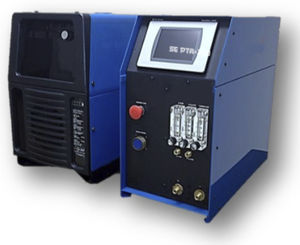
- Industrial machines and equipment
- Welding and Assembly
- Flame welding torch
- Surface Engineering Alloy Co.

- Products
- Catalogs
- News & Trends
- Exhibitions
Flame welding torch air-cooled

Add to favorites
Compare this product
Characteristics
- Technique
- flame
- Cooling mechanism
- air-cooled
Description
The Surface Engineering 200 model welding torch is designed for the application of self-fluxing nickel alloys via a brazing / welding technique. The powders are fed through a small hopper that holds about 3 pounds of powder and are then aspirated into the flame.
The torch can then be used as a simple welding torch whereby when the trigger is pulled down, filler powder can be metered into the weld puddle. This puddle is then subsequently carried along creating a weld overlay of filler. The torch can be used to create wear resistant overlays, repair damaged or worn parts, or repair cast iron amongst a few applications.
Procedures for Use
These puddle torch powders may readily be applied to carbon steel, alloyand stainless steels, Monel, nickel and cobalt base alloys a well as cast iron. There is no problem with the deposit cracking when used on steels of high hardenability. These alloys cannot be applied to copper, brass, bronze, or aluminum and may require special precautions if used on some other metals.
To prepare parts for surfacing, they must be cleaned of all dirt, rust, scale, oil, or paint and then ma-chined or ground smooth.
All sharp edges and corners should be chamfered or radiused. Puddle torch metal surfacing powders are applied with any of the commercial hand-held puddle torches such as those distributed by Eutectic, Maintenance Welding or Wall Colmonoy. After adjusting the torch to a neutral flame with the powder feed lever fully depressed, the metal powder is sprayed onto a preheated area and then fused or puddle into the base metal to coat a section.
*Prices are pre-tax. They exclude delivery charges and customs duties and do not include additional charges for installation or activation options. Prices are indicative only and may vary by country, with changes to the cost of raw materials and exchange rates.




